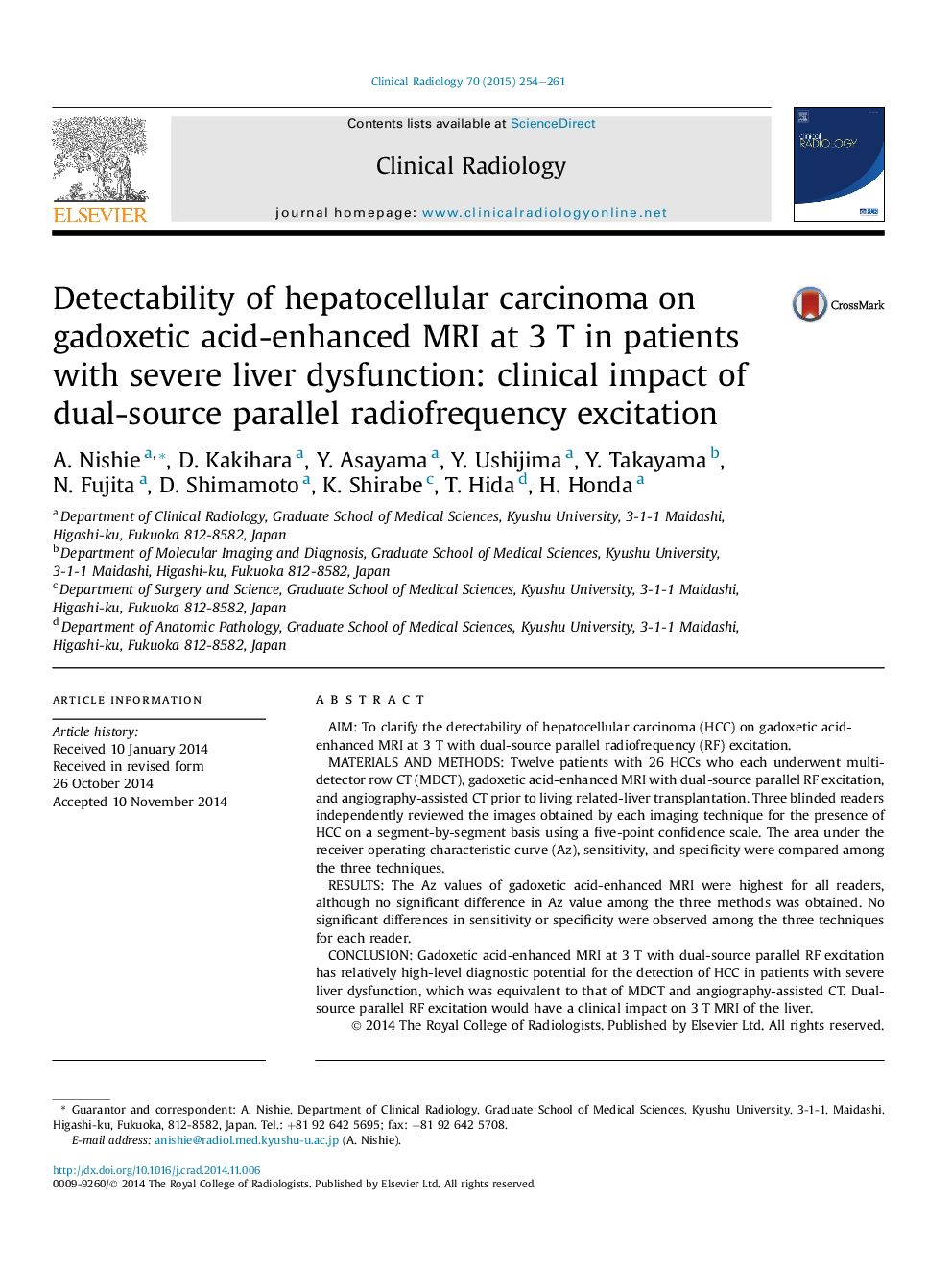| Article ID | Journal | Published Year | Pages | File Type |
|---|---|---|---|---|
| 3981580 | Clinical Radiology | 2015 | 8 Pages |
•Dual-source parallel RF excitation improves lesion detectability at 3.0 Tesla MRI.•This system eliminates dielectric shading formed by a large amount of ascites.•3.0 Tesla MRI with this system has equivalent lesion detectability to 1.5 Tesla.
AimTo clarify the detectability of hepatocellular carcinoma (HCC) on gadoxetic acid-enhanced MRI at 3 T with dual-source parallel radiofrequency (RF) excitation.Materials and methodsTwelve patients with 26 HCCs who each underwent multidetector row CT (MDCT), gadoxetic acid-enhanced MRI with dual-source parallel RF excitation, and angiography-assisted CT prior to living related-liver transplantation. Three blinded readers independently reviewed the images obtained by each imaging technique for the presence of HCC on a segment-by-segment basis using a five-point confidence scale. The area under the receiver operating characteristic curve (Az), sensitivity, and specificity were compared among the three techniques.ResultsThe Az values of gadoxetic acid-enhanced MRI were highest for all readers, although no significant difference in Az value among the three methods was obtained. No significant differences in sensitivity or specificity were observed among the three techniques for each reader.ConclusionGadoxetic acid-enhanced MRI at 3 T with dual-source parallel RF excitation has relatively high-level diagnostic potential for the detection of HCC in patients with severe liver dysfunction, which was equivalent to that of MDCT and angiography-assisted CT. Dual-source parallel RF excitation would have a clinical impact on 3 T MRI of the liver.
